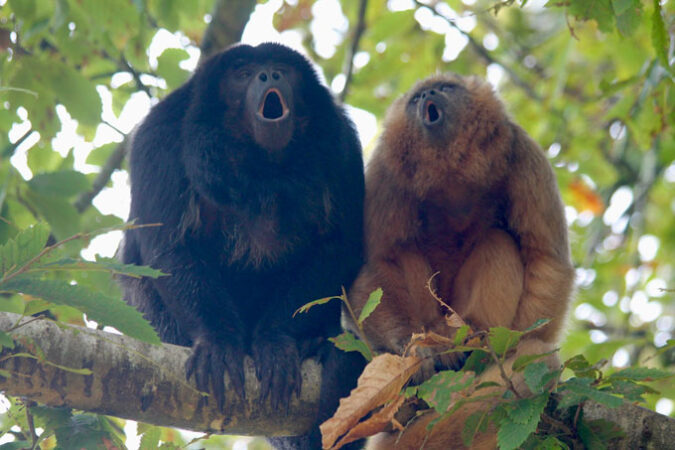A crying baby, a screaming adult, a teenager whose voice cracks — people could have sounded this shrill all the time, a new study suggests, if not for a crucial step in human evolution.
It’s what we’re missing that makes the difference. Humans have vocal cords, muscles in our larynx, or voice box, that vibrate to produce sound (SN: 11/18/15). But unlike all other studied primates, humans don’t have small bits of tissue above the vocal cords called vocal membranes. That uniquely human trait helps people control their voices well enough to produce the sounds that are the building blocks of spoken language, researchers report in the Aug. 12 Science.
Vocal membranes act like a reed in a clarinet, making it easier for some animals to shout loud and shrill. Think of the piercing calls of howler monkeys (SN: 10/22/15). When researchers used MRI and CT scans to look for vocal membranes in 43 different primate species, the scientists were surprised by what they saw: All primates except humans had the tissue.
That loss of vocal membranes would have been a “very major, very revolutionary event in human evolution,” says Takeshi Nishimura, a paleontologist at Kyoto University in Japan.
 Howler monkeys, pictured here screaming, get help being loud and shrill from the vocal membranes in their voice boxes.Jacob C. Dunn
Howler monkeys, pictured here screaming, get help being loud and shrill from the vocal membranes in their voice boxes.Jacob C. Dunn
Primates mostly make sound in the same basic way: They push air out from their lungs while vibrating muscles in the larynx to create sound waves. To understand the role that vocal membranes play, Nishimura’s team studied videos of primate voice boxes in action in chimpanzees, rhesus macaques and squirrel monkeys. The researchers also took larynges from macaques and chimpanzees that had died of natural causes and — in what’s common practice for the field — mounted the parts on tubes, pushing air through the larynges to see how the vocal cords and membranes would react.
In both experiments, the larynges made sounds that would often fluctuate wildly in pitch. Nishimura’s team found that happens only when an animal has both vocal membranes and vocal cords.

Sign Up For the Latest from Science News
Headlines and summaries of the latest Science News articles, delivered to your inbox
Client key* E-mail Address* Go
Thank you for signing up!
There was a problem signing you up.
In humans, that sort of screeching can happen when we put extreme amounts of pressure on our voice, like when we scream — or when teens struggle with controlling their growing vocal cords and their voices crack. But those are rare cases. Since humans don’t have vocal membranes, we usually make more stable sounds than other primates, the team concludes. Our mouths and tongues, the idea goes, can then manipulate those stable tones into the complex sounds that language is based on.
“That’s a really elegant explanation,” says Sue Anne Zollinger, an animal physiologist at Manchester Metropolitan University in England who was not involved in the study. It’s almost counterintuitive, she says: “You lose complexity to be able to produce more complex sounds.”
The loss of vocal membranes isn’t the only thing that makes humans more eloquent than other primates. Beyond anatomical differences, humans have specific genes that may have helped drive language evolution (SN: 8/3/18). And perhaps most importantly, human brains are structured differently from other primates in ways that also give us more control over our speech (SN: 12/19/16).

